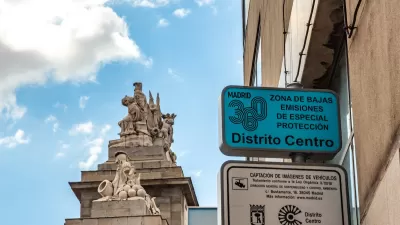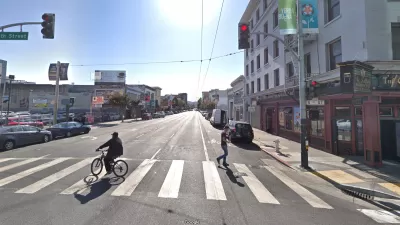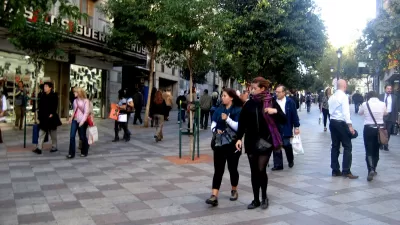The NYT chief art critic, Michael Kimmelman, reviews Madrid's almost complete six-mile long park, Madrid Rio, that is having a transformative effect on the city. The park was made possible by the under-grounding of the M-30 ring road.
Kimmelman adds Madrid Rio to the growing list of new urban spaces around the world made possible by taking down freeways, beginning with San Francisco's elevated Embarcadero Freeway in 1989. Unlike the San Francisco boulevard replacement, Madrid Mayor Alberto Ruíz-Gallardón chose a much more expensive alternative, costing $4.5 billion to tunnel the freeway. Madrid Rio also reclaims the Manzanares River-front.
"More than six miles long, it transforms a formerly neglected area in the middle of Spain's capital. Its creation, in four years, atop a complex network of tunnels dug to bury an intrusive highway, also rejuvenates a long-lost stretch of the Manzanares River, and in so doing knits together neighborhoods that the highway had cut off from the city center.
All around the world, highways are being torn down and waterfronts reclaimed; decades of thinking about cars and cities reversed; new public spaces created."
Madrid Rio includes more than just green space.
"(T)he park belongs to a larger transformation that includes the construction of dozens of new metro and light-rail stations that link far-flung, disconnected and often poor districts on Madrid's outskirts to downtown."
FULL STORY: In Madrid's Heart, Park Blooms Where a Freeway Once Blighted

Trump Administration Could Effectively End Housing Voucher Program
Federal officials are eyeing major cuts to the Section 8 program that helps millions of low-income households pay rent.

Planetizen Federal Action Tracker
A weekly monitor of how Trump’s orders and actions are impacting planners and planning in America.

Ken Jennings Launches Transit Web Series
The Jeopardy champ wants you to ride public transit.

New Mexico Aging Department Commits to Helping Seniors Age ‘In Place’ and ‘Autonomously’ in New Draft Plan
As New Mexico’s population of seniors continues to grow, the state’s aging department is proposing expanded initiatives to help seniors maintain their autonomy while also supporting family caregivers.

USDOT Waters Down Self-Driving Car Regulations
The agency is reducing reporting requirements for autonomous vehicles and cars with self-driving features, prompting concern among safety advocates who say transparency is essential to the safe deployment of AV technology.

‘Minnesota Nice’ Isn’t so Nice When You Can’t Find a Place to Live
The Economic Development and Housing Challenge Program can help address the scourge of homelessness among Indigenous people.
Urban Design for Planners 1: Software Tools
This six-course series explores essential urban design concepts using open source software and equips planners with the tools they need to participate fully in the urban design process.
Planning for Universal Design
Learn the tools for implementing Universal Design in planning regulations.
Heyer Gruel & Associates PA
Ada County Highway District
Institute for Housing and Urban Development Studies (IHS)
City of Grandview
Harvard GSD Executive Education
Toledo-Lucas County Plan Commissions
Salt Lake City
NYU Wagner Graduate School of Public Service





























